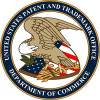ECA

This process is known as Electrical Chemical Activation of water.
ECA Technology involves the electrolysis of molten salts. It utilizes electrolytic cells encompassing an anode chamber separated from the cathode chamber by a unidirectional ionic ceramic diaphragm (semi-porous membrane). The electrolytic cell allows migration and separation of ions through the membrane and prevention of production of gaseous chlorine (Cl2). By passing an electrical current through the solution, an electrochemical or oxidation-reduction (redox) process occurs, generating oxidized species.
An ECA electrolysis process is one in which positive and negative electrodes are submerged in a solute containing positive and negative ions.
During this process, two separate streams of activated water are produced: Anolyte and Catholyte. Positive ions (cations) are drawn towards the electron-rich negative cathode, where they receive electrons, forming Catholyte, a negatively-charged antioxidant solution. At the positive anode, negative ions (anions) are attracted, which give up their additional electrons to the electron-depleted anode to form Anolyte, a positively charged oxidant solution.
The cathode area produces alkaline (high pH) reducing water. The anode area produces acidic (low pH) oxidizing water. In the generation of Ultra-Lyte®, part of the negatively charged antioxidant solution formed at the cathode is channeled back into the anode chamber. By re-introducing the alkaline water back into the anode, a neutral pH liquid is created. When generated by the Ultra-Lyte® System, this solution is called Ultra-Lyte®. Ultra-Lyte® is an oxidizing agent with a strong antimicrobial effect.
Mechanism of Action
Ultra-Lyte® is primarily composed of oxidizing biocide HOCl, which is a general chemical oxidant. HOCL is not selective for living organisms, but reacts with any oxidizable matter. However, HOCL is bactericidal because certain bacterial cell components can react readily with it, as HOCL has a higher oxidation potential than most chemicals present in water.
The bacterial cell membrane provides the osmotic barrier for the cell, and allows the active transport of substances into the cell. The bacterial membrane itself has an electrical charge. Alternations in transmembrane potential by the anions, present in Ultra-Lyte®, result in the rupture of the membranes and outflow of the bacterial cell contents, instantaneously destroying the cell.
Ultra-Lyte® can disrupt other functions of the cell as well. Unlike “higher” organisms, single-celled organisms such as bacteria obtain their energy sources from the environment immediately outside the cell. Small molecules are transported across the cell membrane via an electrochemical gradient. Thus, any significant change in the ORP of the immediate environment has drastic consequences for the cell. Even if instantaneous death of the cell does not occur, all enzymatic functions in the membrane are affected and this will also result in loss of cell viability.
The mechanism of action for the eradication of various microorganisms by Ultra-Lyte®; is well-documented by third party resources. The mode of action is as follows:
- The free ions in Ultra-Lyte® rapidly react and denature proteins. For this reason, Ultra-Lyte® should not be used on protein-based products because it will react with and destroy the proteins.
- Once Ultra-Lyte® comes in contact with a microorganism, it attacks the bacterial proteins located in the cell membranes.
- Because of the osmolarity difference (the concentration of ions in the solution versus in the cytoplasm), Ultra-Lyte® induces the rupture of cell membranes, leading to cell lysis.
The high oxidation of Ultra-Lyte® first damages bacteria cell walls, allowing infiltration by water. The microbe reaches capacity, causing an osmotic, or hydration, overload. The acidic fluid and water floods the cell faster than the cell can expel it, literally causing the cell to burst.
Ultra-Lyte® produces a residual that continues to remain available based on bacterial demand. ORP levels can last for long periods of time depending on organic burden. Tests show that Ultra-Lyte® is not only an effective sanitizer and disinfectant, but is also sporicidal. Sporicidal tests have demonstrated that an application of Ultra-Lyte® eliminates bacterial spores and biofilm.
All over the world, consumers have expressed a strong desire to reduce or ban antibiotic use in food-supply animal feeding rations. Antibiotics are becoming ineffective in animals and humans, and are leading to the development of antibiotic-resistant “super bugs”. The use of Ultra-Lyte® greatly reduces the need for antibiotics in animal feed rations due to the bactericidal nature of the solution. Based on current research it appears that microorganisms are presently not able to build up resistance to Ultra-Lyte® as they are able to do with other sanitizers and disinfectants.
